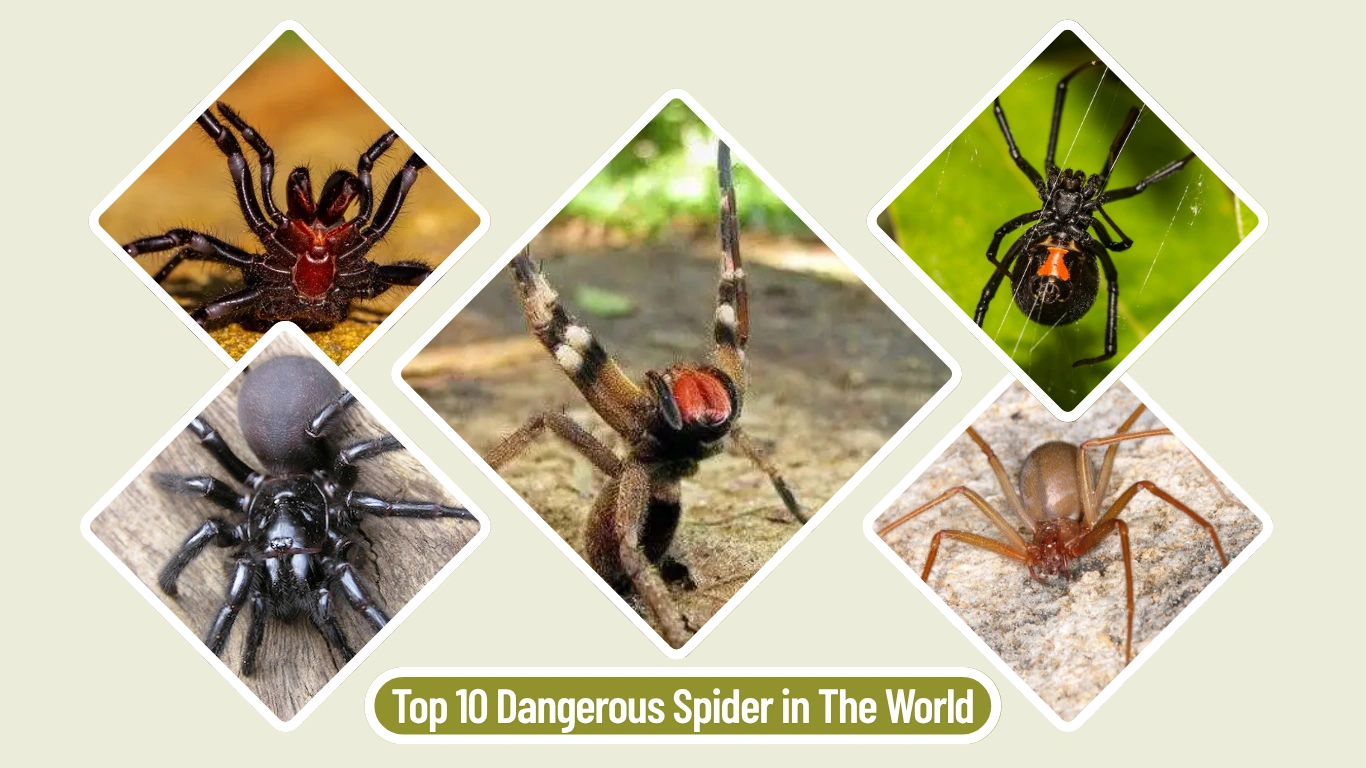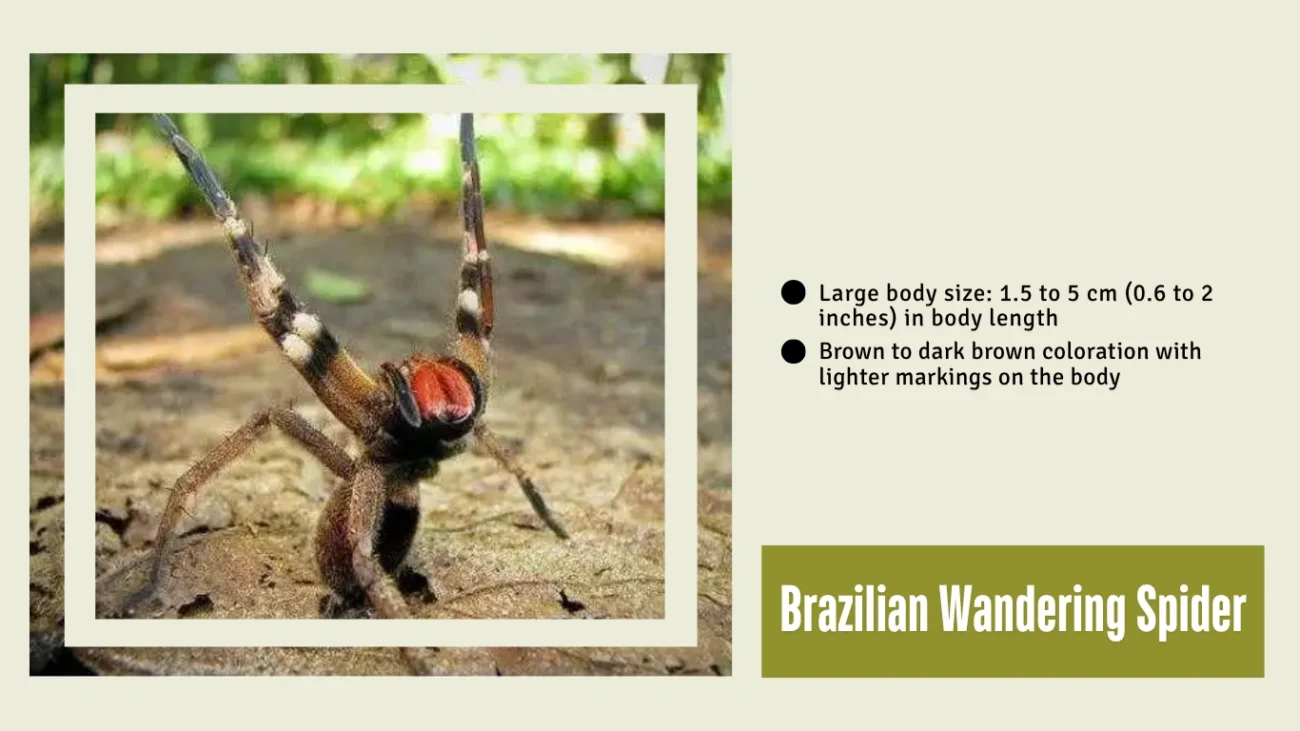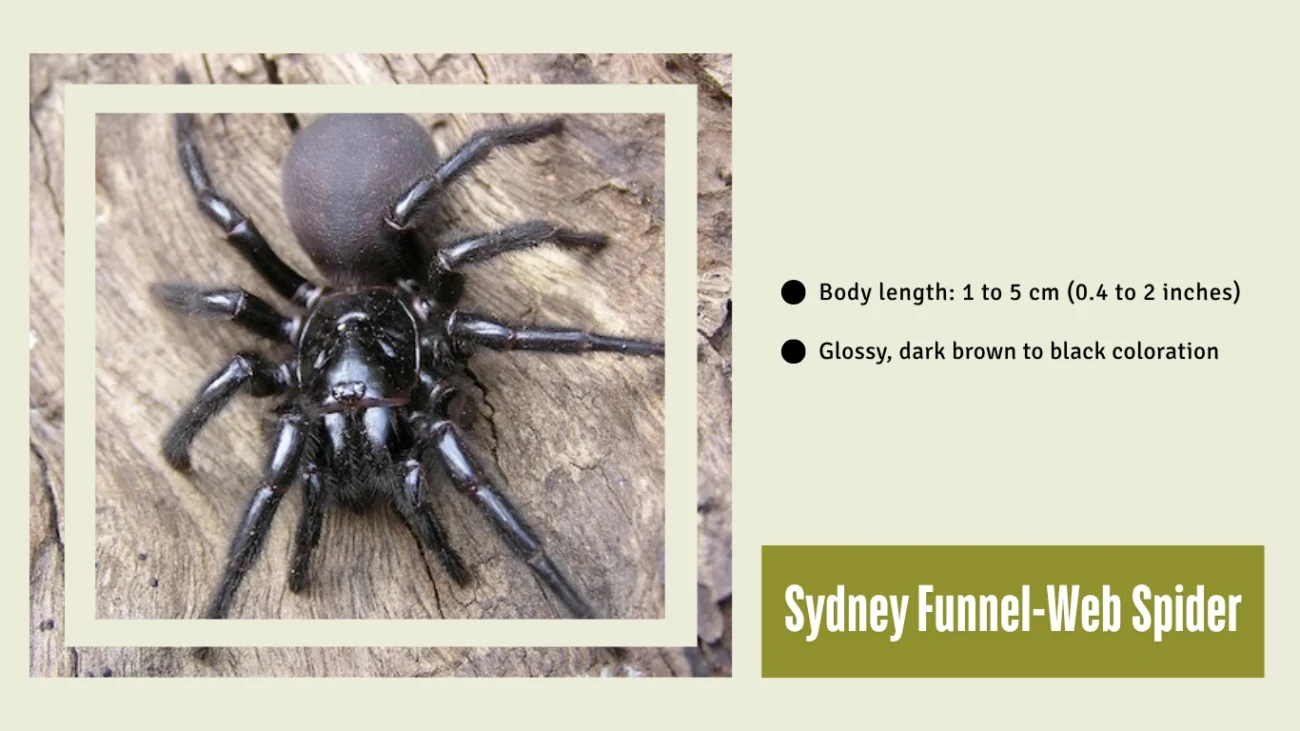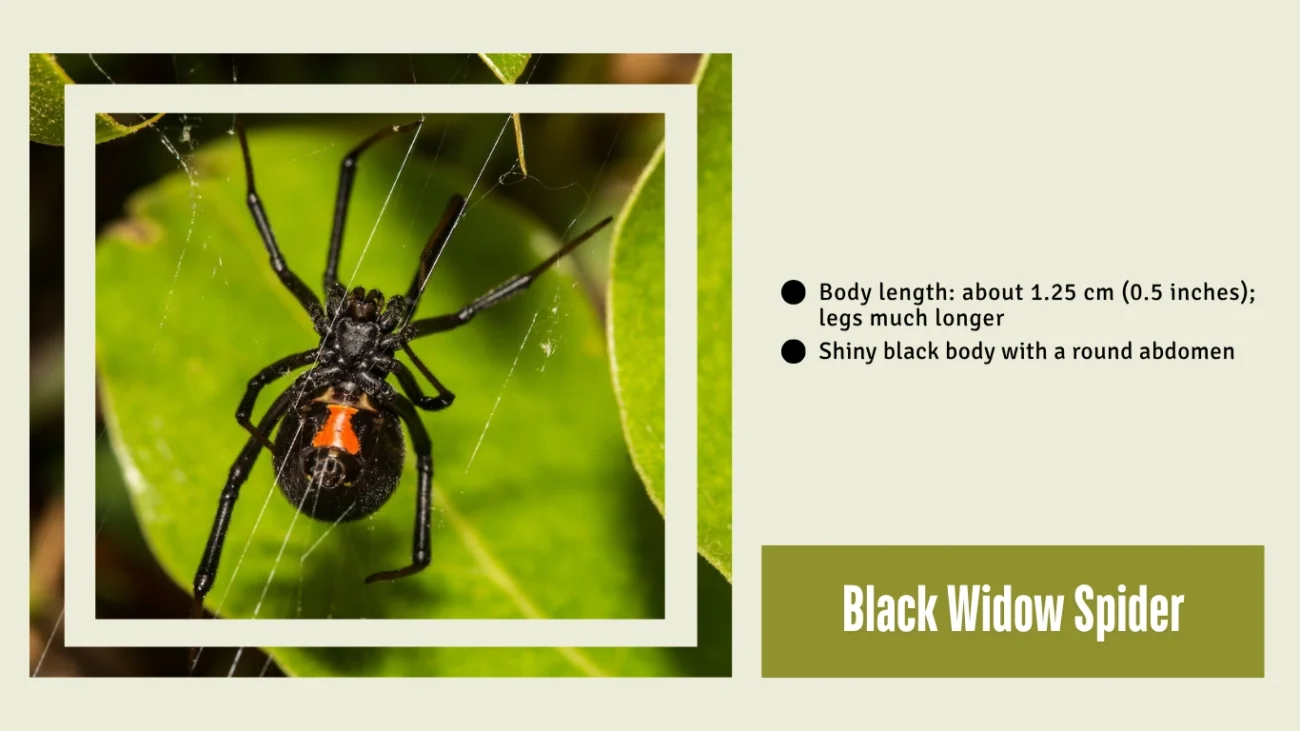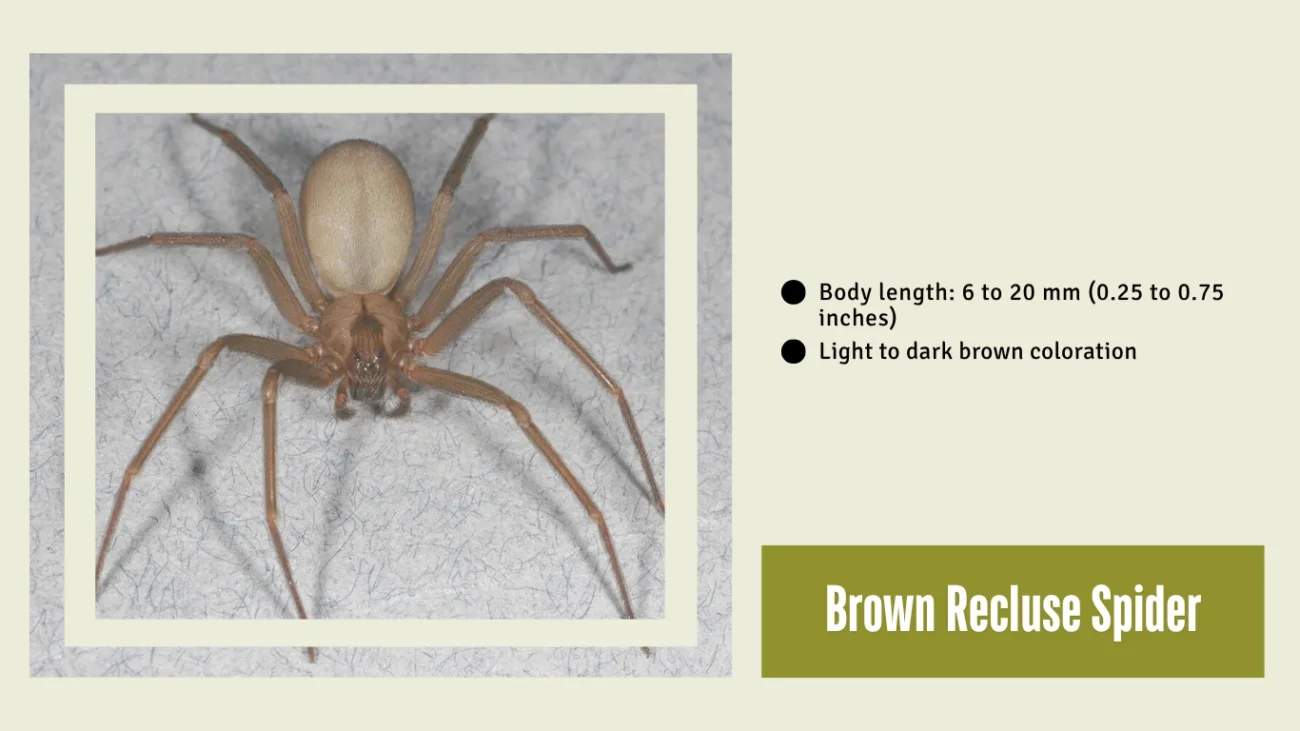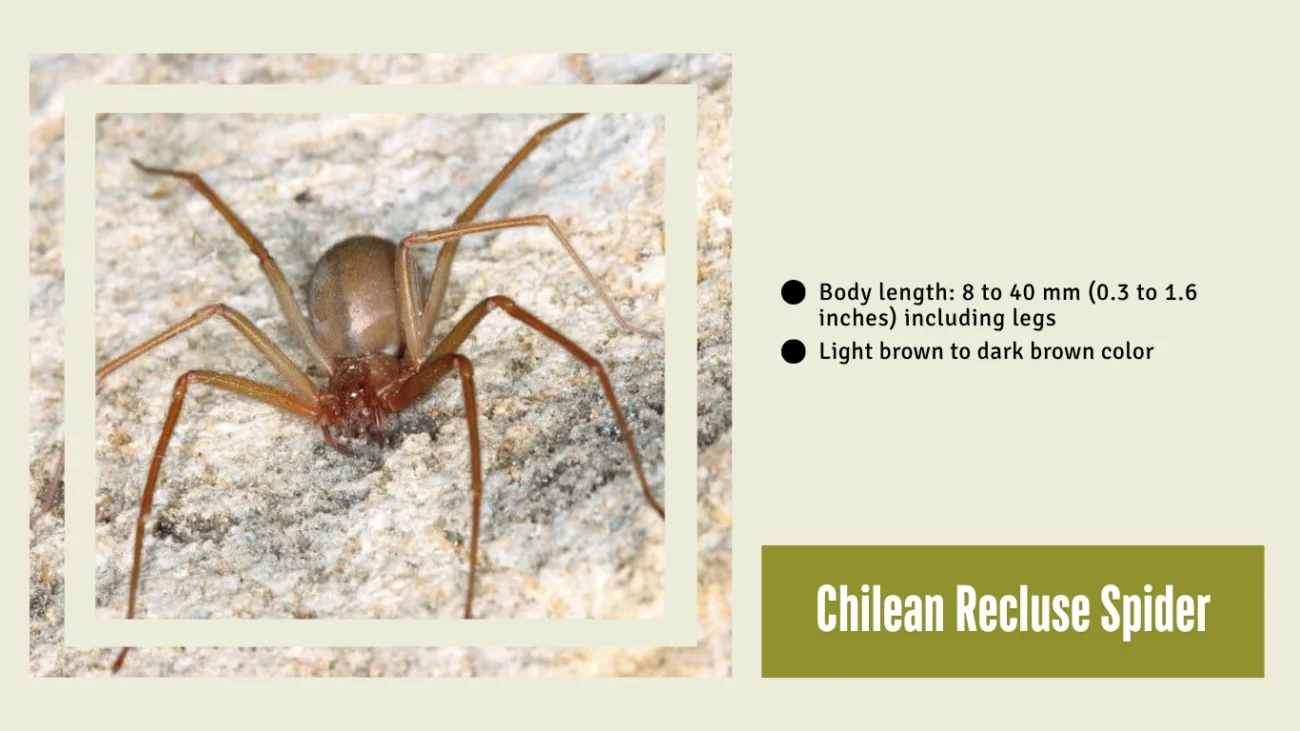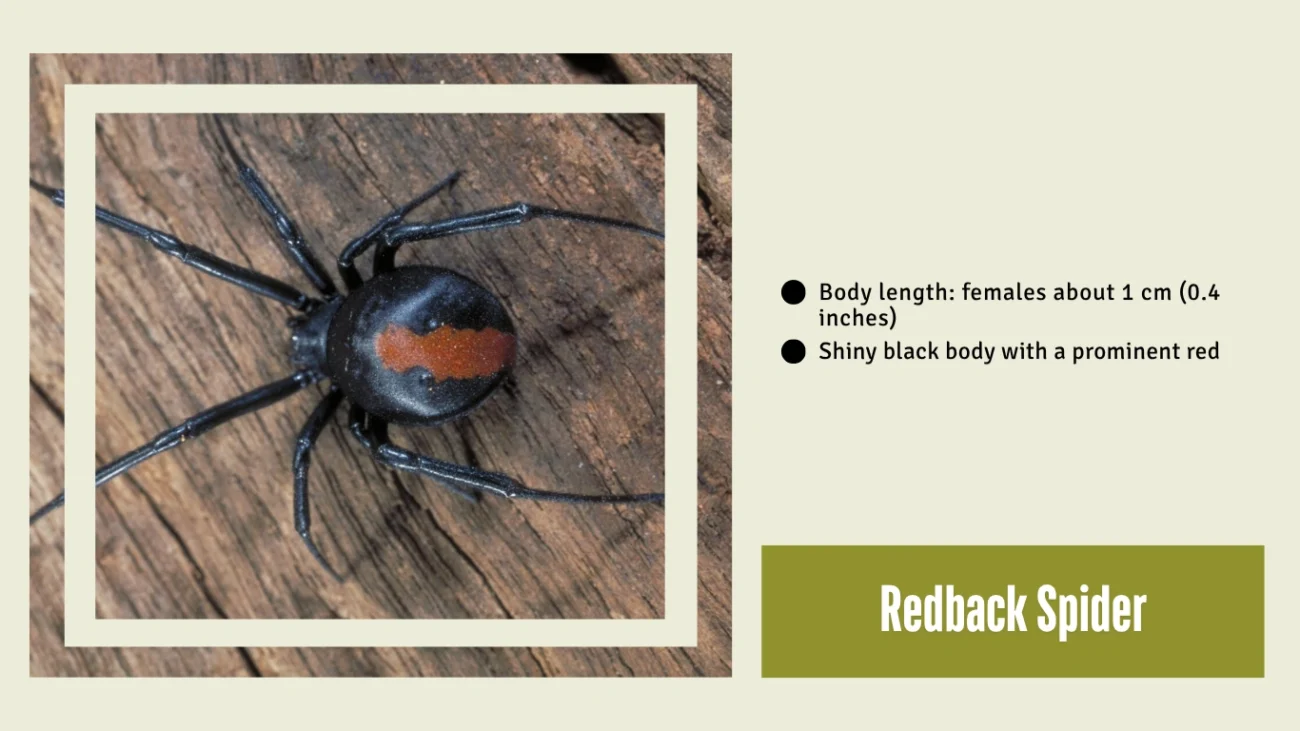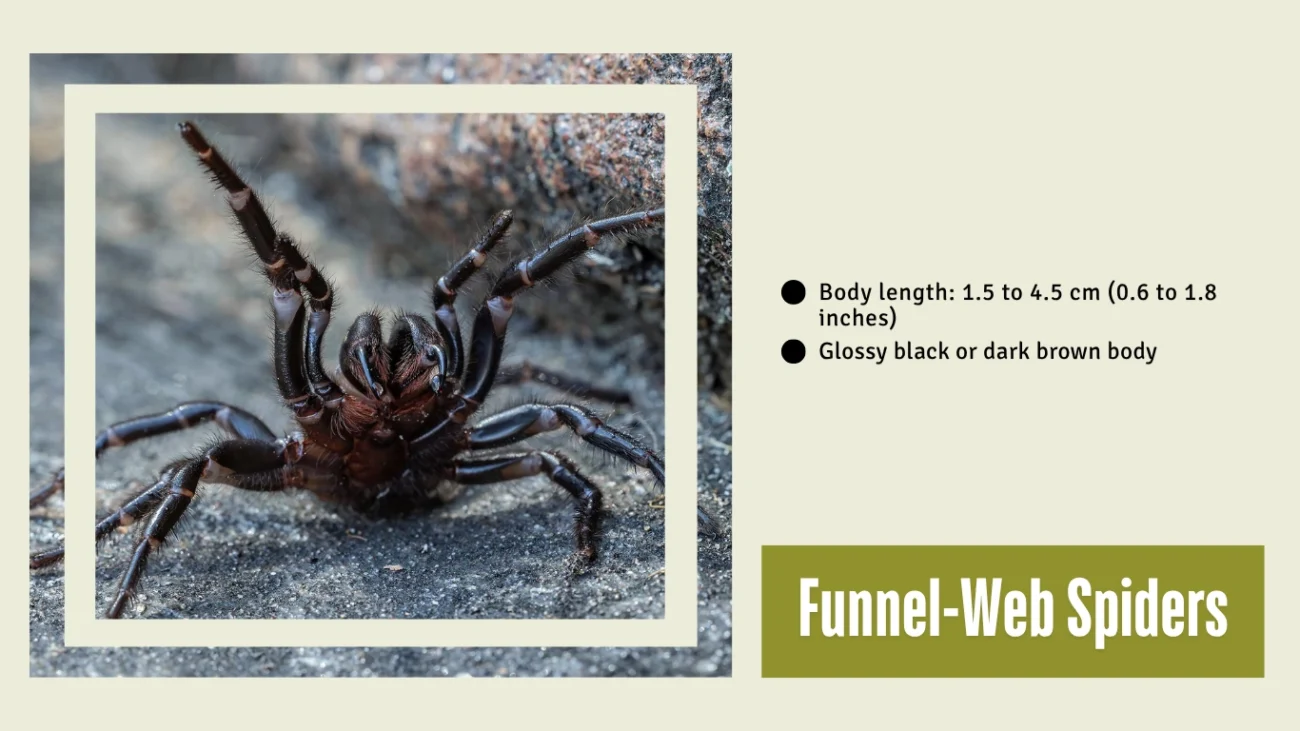Spiders are found all over the world, but only a few are truly dangerous to humans. While most are harmless and play vital roles in ecosystems, some species carry venom potent enough to cause serious medical issues—or even death. From the aggressive Brazilian Wandering Spider to the elusive Six-Eyed Sand Spider, these arachnids command respect. This list highlights the top ten most dangerous spiders in the world, detailing their appearance, habitats, and the effects of their potentially lethal bites.
1. Brazilian Wandering Spider (Phoneutria fera / Phoneutria nigriventer)
The Brazilian Wandering Spider is considered one of the most venomous spiders in the world. Native to the tropical forests of Central and South America, it is known for its aggressive behavior and potent neurotoxic venom. This spider often wanders on the forest floor at night instead of building webs, increasing the chance of encounters with humans. Its bite can cause severe pain, muscle paralysis, and in rare cases, death if untreated.
Identification
- Large body size: 1.5 to 5 cm (0.6 to 2 inches) in body length
- Long, thick legs with dark bands
- Brown to dark brown coloration with lighter markings on the body
- Hairy appearance, especially on legs
- Distinctive pattern of stripes or spots on the ventral side (underside) of the legs
Habitat and Behavior
Brazilian Wandering Spiders are nocturnal hunters that do not rely on webs to catch prey. They roam the forest floor and sometimes enter human dwellings in search of shelter or prey. They are fast movers and can bite defensively when threatened.
Venom and Danger
The venom contains potent neurotoxins that can cause intense pain, difficulty breathing, and, in some cases, priapism (prolonged erection) in male victims. Medical treatment with antivenom is effective, but bites should be taken seriously due to the potential severity.
2. Sydney Funnel-Web Spider (Atrax robustus)
The Sydney Funnel-Web Spider is notorious for its highly toxic venom and aggressive behavior. Found primarily in the Sydney region of Australia, this spider is considered one of the deadliest in the world. It builds silk-lined burrows with funnel-shaped entrances and is mainly active at night. Despite its small size, its venom can cause severe symptoms and even death if untreated.
Identification
- Body length: 1 to 5 cm (0.4 to 2 inches)
- Glossy, dark brown to black coloration
- Large, powerful fangs capable of penetrating fingernails and soft shoes
- Robust, hairy body with a shiny carapace
- Funnel-shaped silk web at burrow entrance
Habitat and Behavior
Sydney Funnel-Web Spiders live in moist, sheltered areas such as under rocks, logs, or garden debris. They rarely wander far from their burrows but will aggressively defend their territory if disturbed.
Venom and Danger
The venom contains a potent neurotoxin called atracotoxin, which affects the nervous system and can cause muscle spasms, breathing difficulties, and death without antivenom treatment. Prompt medical care has made fatalities rare in modern times.
3. Black Widow Spider (Latrodectus mactans)
The Black Widow Spider is infamous for its dangerous bite and distinctive appearance. Native to North America, it is easily recognized by the red hourglass marking on its abdomen. Although rarely fatal, its venom is extremely potent and can cause intense pain and muscle cramps in humans.
Identification
- Body length: about 1.25 cm (0.5 inches); legs much longer
- Shiny black body with a round abdomen
- Bright red or orange hourglass shape on the underside of the abdomen
- Females are larger and more dangerous than males
- Webs are irregular and messy in appearance
Habitat and Behavior
Black Widows prefer dark, undisturbed areas such as woodpiles, garages, sheds, and basements. They are not aggressive and usually bite only when disturbed or threatened.
Venom and Danger
Their venom is a neurotoxin that affects the nervous system, causing severe abdominal pain, muscle rigidity, nausea, and sweating. While fatalities are rare, medical attention is essential, especially for children or the elderly.
ChatGPT said:
4. Brown Recluse Spider (Loxosceles reclusa)
The Brown Recluse Spider is known for its necrotic venom, which can cause severe skin damage. Native to the central and southern United States, it prefers dark, undisturbed spaces and is rarely seen due to its shy, reclusive nature. Despite its small size, its bite can lead to serious medical complications.
Identification
- Body length: 6 to 20 mm (0.25 to 0.75 inches)
- Light to dark brown coloration
- Distinctive dark violin-shaped marking on the back
- Six eyes arranged in pairs (most spiders have eight)
- Long, thin legs with fine hairs
Habitat and Behavior
Brown Recluses inhabit woodpiles, basements, closets, and attics. They are nocturnal and tend to hide during the day. They are non-aggressive and only bite when trapped against the skin.
Venom and Danger
The venom contains enzymes that can destroy blood vessels and tissues, leading to necrosis. Bites may start painless but can develop into deep, open sores. Medical attention is advised for proper wound care and infection prevention.
5. Six-Eyed Sand Spider (Sicarius hahni)
The Six-Eyed Sand Spider is one of the most venomous yet elusive spiders in the world. Found in the deserts of southern Africa, it is a master of camouflage, often burying itself under sand. Though bites to humans are extremely rare, its venom is capable of causing severe tissue damage and even death in lab animals.
Identification
- Body length: 8 to 15 mm (0.3 to 0.6 inches); leg span up to 50 mm (2 inches)
- Flattened body with sandy, reddish-brown coloration
- Six eyes arranged in three pairs
- Covered in fine hairs that help with camouflage
- Legs spread out laterally, crab-like appearance
Habitat and Behavior
This spider inhabits arid, sandy environments and remains motionless under the surface, waiting to ambush prey. It does not build webs and rarely comes into contact with humans.
Venom and Danger
The venom is both cytotoxic and hemolytic, capable of destroying tissue and red blood cells. While human envenomations are extremely rare, bites can cause extensive skin necrosis and potentially be fatal without treatment.
6. Chilean Recluse Spider (Loxosceles laeta)
The Chilean Recluse Spider is one of the most dangerous recluse species due to the potency of its venom. Native to South America, especially Chile and Peru, it has also been introduced to parts of North America and Europe. Its bite can cause severe tissue damage and, in rare cases, life-threatening systemic reactions.
Identification
- Body length: 8 to 40 mm (0.3 to 1.6 inches) including legs
- Light brown to dark brown color
- Dark violin-shaped mark on the cephalothorax
- Six eyes arranged in three pairs (dyads)
- Thin legs and fine body hairs
Habitat and Behavior
Chilean Recluse Spiders favor warm, dry, and dark environments like closets, woodpiles, basements, and behind furniture. They are nocturnal, shy, and only bite when threatened.
Venom and Danger
The venom is highly necrotic, sometimes more potent than other recluse species. Bites can result in deep ulcers, scarring, fever, and systemic illness. Prompt medical attention is crucial, especially in vulnerable individuals like children or the elderly.
7. Redback Spider (Latrodectus hasselti)
The Redback Spider, a close relative of the Black Widow, is one of Australia’s most dangerous spiders. Recognized by the striking red stripe on its back, this species is highly venomous. Although deaths are rare due to antivenom availability, bites can cause severe pain and systemic symptoms.
Identification
- Body length: females about 1 cm (0.4 inches); males are much smaller
- Shiny black body with a prominent red or orange stripe on the upper abdomen
- Round abdomen with long, slender legs
- Irregular, sticky web structure
- Males often lack the bright red marking or have faint streaks
Habitat and Behavior
Redbacks are found in dry, sheltered locations such as sheds, mailboxes, outdoor toilets, and under furniture. They rarely leave their webs and are most active at night.
Venom and Danger
The venom contains neurotoxins that affect the nervous system, causing intense pain, muscle weakness, sweating, nausea, and, in some cases, paralysis. Antivenom is widely available in Australia and has significantly reduced the risk of serious complications.
ChatGPT said:
8. Mouse Spider (Missulena spp.)
Mouse Spiders are a group of venomous spiders native to Australia. Although they resemble funnel-web spiders and possess potent venom, they are less aggressive and rarely bite humans. Their name comes from their furry, mouse-like appearance and burrowing habits.
Identification
- Body length: 1 to 3 cm (0.4 to 1.2 inches)
- Bulky, glossy body, often black or dark blue in color
- Short, thick legs
- Large fangs and powerful jaws
- Males of some species have bright red or orange coloring on the head
Habitat and Behavior
Mouse Spiders live in burrows, often with trapdoors, and prefer moist, sandy or loamy soil. They are usually active during the day and are less likely to wander far from their homes compared to funnel-web spiders.
Venom and Danger
Some species produce venom as toxic as that of the Sydney Funnel-Web, capable of causing serious illness. However, bites are rare, and most recorded envenomations have been mild. Prompt treatment with funnel-web antivenom is effective if needed.
9. Yellow Sac Spider (Cheiracanthium inclusum)
The Yellow Sac Spider is a small yet medically significant spider found in many parts of the world, including North and South America, Africa, and Europe. Although not usually life-threatening, its bite can cause painful skin lesions and discomfort, often mistaken for those of more dangerous species.
Identification
- Body length: 5 to 10 mm (0.2 to 0.4 inches)
- Pale yellow, beige, or light green coloration
- Slightly darker marking running along the top of the abdomen
- Long front legs compared to the others
- Small, oval-shaped body
Habitat and Behavior
Yellow Sac Spiders are commonly found indoors, hiding in ceilings, wall corners, or behind furniture. They create silk sacs to rest in during the day and hunt at night. They are quick and may bite defensively when disturbed.
Venom and Danger
Their venom can cause mild necrotic wounds, redness, swelling, and itching. In some cases, a blister or ulcer may develop. While not considered highly dangerous, medical attention is recommended if symptoms worsen or signs of infection appear.
10. Funnel-Web Spiders (Hadronyche spp.)
Funnel-Web Spiders, particularly species within the Hadronyche genus, are closely related to the infamous Sydney Funnel-Web. Found primarily in eastern and southern Australia, these spiders are highly venomous and known for their fast, defensive behavior when threatened.
Identification
- Body length: 1.5 to 4.5 cm (0.6 to 1.8 inches)
- Glossy black or dark brown body
- Prominent, downward-pointing fangs
- Hairy, robust legs and body
- Builds funnel-shaped silk retreat in moist, sheltered locations
Habitat and Behavior
These spiders inhabit forests, gardens, and urban areas, building burrows with funnel-shaped webs under rocks, logs, or leaf litter. Some species may wander during wet weather or mating season, increasing encounters with humans.
Venom and Danger
Venom from some Hadronyche species contains strong neurotoxins, similar to the Sydney Funnel-Web. Bites can result in muscle spasms, breathing issues, and potentially life-threatening symptoms if untreated. Antivenom is available and has reduced fatalities significantly.
Summary
The world’s most dangerous spiders are known for their potent venom, stealthy behavior, and potential threat to humans. Species like the Brazilian Wandering Spider, Sydney Funnel-Web, and Black Widow top the list due to their neurotoxic bites. Others, like the Brown Recluse and Six-Eyed Sand Spider, cause severe skin and tissue damage. While fatalities are rare thanks to medical advances, these spiders still demand caution and awareness, especially in regions where they are native or commonly encountered.

